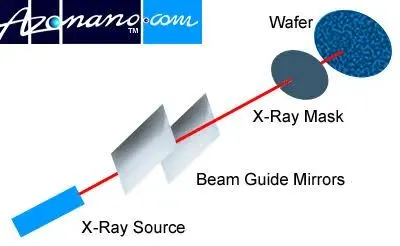
Imagine this hurtling through space: Scientists have found an asteroid with dimensions similar to the Empire State Building.
This asteroid, which recently sped past Earth, has caught the attention of NASA astronomers for its bizarre long shape. The space rock — which has perhaps whizzed by to set the record straight that not all asteroids are vaguely ball-like — is more than three times as long as it is wide.
To get a sense of its scale, scientists have estimated the rock is about 1,600-by-500 feet, roughly comparable to that of the world-famous landmark that looms over 100 stories above New York.
“Of the 1,040 near-Earth objects observed by planetary radar to date, this is one of the most elongated we’ve seen,” said Lance Benner, principal scientist at NASA’s Jet Propulsion Laboratory, in a statement(Opens in a new tab).
A mistake on the Webb telescope just led to a surprising discovery
Tweet may have been deleted
(opens in a new tab)
(Opens in a new tab)
The asteroid, known as 2011 AG5, zipped past Earth at a safe distance of 1.1 million miles away on Feb. 3, according to the U.S. space agency. But that approach gave astronomers their first crack at studying its size, rotation, surface, and silhouette in detail since the object was discovered 12 years ago.
“This is one of the most elongated [asteroids] we’ve seen.”
The image above is a collage of six pictures taken of the long object by the Goldstone Solar System Radar(Opens in a new tab) antenna dish in California. There were no signs of King Kong clinging to the towering rock, but astronomers did make a few other observations: It has a dark charcoal color, appears to be scooped on one side, and is slowly spinning around every nine hours.
It takes the asteroid about twice as long to orbit the sun as Earth and won’t have a near flyby with this planet until 2040, when it could come within 670,000 miles, according to NASA. That’s close in terms of the cosmos — space, after all, is a big place — but it’s still three times farther than the moon is to Earth.

A 2012 plot of asteroid 2011 AG5, which shows that it travels beyond the orbit of Mars and as close to the sun as halfway between Earth and Venus.
Credit: NASA / JPL-Caltech / NEOPO
Want more science and tech news delivered straight to your inbox? Sign up for Mashable’s Top Stories newsletter today.
Millions of space rocks orbit the sun. They’re the rocky rubble left over from the formation of the solar system about 4.6 billion years ago. Most of that ancient detritus is too far away to pose a threat to this planet. The majority are in the main asteroid belt between Mars and Jupiter, but occasionally rocks get nudged into the inner solar system, relatively closer to Earth.
There are no known asteroids on an impact course with Earth. Scientists are, however, keeping a close watch on 30,000 large objects(Opens in a new tab) out there and estimate there could be 15,000 or so more waiting to be discovered. Using powerful telescopes to scan the sky, astronomers are finding about 500 new sizable space rocks in Earth’s solar system neighborhood each year.
“An asteroid impact is an extremely rare event,” said Lindley Johnson, planetary defense officer for NASA, last year. “Maybe once a century is there an asteroid that we would really worry about and want to deflect.”
“Maybe once a century is there an asteroid that we would really worry about and want to deflect.”
Tweet may have been deleted
(opens in a new tab)
(Opens in a new tab)
But even smaller rocks can cause immense destruction. An impact by an asteroid some 100 to 170 feet wide could destroy a small city(Opens in a new tab), according to NASA. Ten years ago this week, on Feb. 15, 2013, an undetected meteor exploded over Chelyabinsk, Russia(Opens in a new tab), causing a disaster that affected six cities and injured 1,600 people. The rock was just 60 feet across.
Nations are developing warning systems and defense strategies, in case an asteroid or comet should ever meander into an orbit that could jeopardize civilization. As a test, NASA launched a spacecraft in November 2022, known as the DART mission, to intentionally crash into a harmless asteroid in deep space to try to shift its trajectory. The $330 million exercise was successful, proving NASA is capable of thwarting a potentially hazardous space rock in the future.
Shortly after 2011 AG5 was discovered, some people were concerned(Opens in a new tab) it could be a danger to the planet decades into the future. Armed with little information about its orbit at the time, scientists couldn’t make accurate estimates about its location to put people’s minds at ease.
Paul Chodas, director of the Center for Near Earth Object Studies(Opens in a new tab) at the lab, said the asteroid “became a poster child” when early observations showed it had a small chance of a future Earth hit.
“Continued observations of this object ruled out any chance of impact,” he said in a statement.(Opens in a new tab) “And these new ranging measurements by the planetary radar team will further refine exactly where it will be far into the future.”






